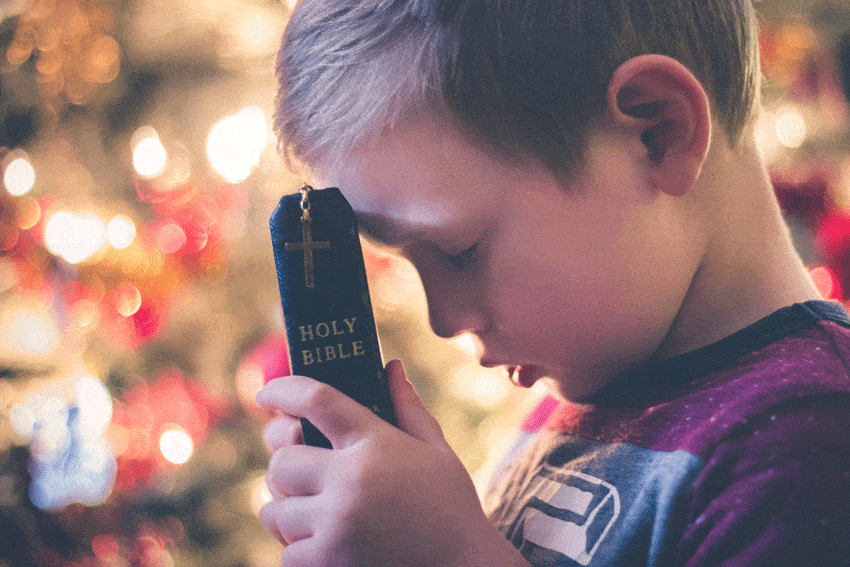
Dear Father, Some time ago you wrote about some young saints. A friend recently mentioned St Dominic Savio, another young saint. Can you tell me when he lived and what he is known for?
When it comes to young saints, St Dominic Savio must certainly be ranked among them, for he died at the age of only 14. Dominic was born in 1842 in the Italian village of Riva in the Piedmont region of northern Italy, one of 10 children of Carlo and Brigitta Savio.
His father was a blacksmith and his mother a seamstress. They were poor, hardworking and pious, and they gave their children a good Christian upbringing. When he was only four, Dominic was able to pray by himself.
Even though at that time the customary age for children to receive their first Communion was 12, the parish priest allowed Dominic to do so when he was only seven.
He attended Mass regularly with his mother and, if he arrived for Mass before the church was opened in the morning, he would kneel on the ground, even in the mud or snow, to pray. In school, Dominic was known for being very intelligent and hardworking.
At the age of five he began to serve Mass and he endeavoured to attend Mass everyday as well as to go to confession regularly. Even though at that time the customary age for children to receive their first Communion was 12, the parish priest allowed Dominic to do so when he was only seven, since he knew the catechism and he understood the significance of the Eucharist.
Later he would say of that day that it was “the happiest and most wonderful day of my life.”
On the day of his first Communion Dominic made some promises, which he wrote down in a little book and re-read many times.
His promises were: to go to confession often and to go to Holy Communion as often as his confessor allowed, to sanctify Sundays and feast days in a special way, to have Jesus and Mary as his friends, and to choose death rather than sin.
For secondary education Dominic went to the County School at Castelnuovo d’Asti, five kilometres from his home at Murialdo, where his parents moved when he was two. There he caught the attention of Fr Giuseppe Cugliero, one of his teachers, who introduced him to St John Bosco in October 1854. Don Bosco found Dominic eager to go to Turin with him, as he wanted to study for the priesthood.
In Turin, at the Oratory of St Francis de Sales, Dominic placed himself under the guidance of Don Bosco. He studied hard and would happily listen to talks and sermons, asking for clarification of any points that were not clear to him.
When the dogma of the Immaculate Conception was defined by Pope Pius IX in 1854, Dominic renewed his First Communion promises at the altar of Mary in the Oratory.
Don Bosco says that from that point on Dominic’s efforts to seek holiness were so obvious that Don Bosco recorded them for future reference. In his effort to grow in holiness Dominic made his bed uncomfortable with little stones and pieces of wood, he slept with a thin blanket in winter, wore a hair shirt and fasted on bread and water.
His superiors forbade him to do some of these penances, as they would affect his health. Don Bosco told him that the best penance would be to perform their daily duties with perfection and humility, and that obedience was the greatest sacrifice.
Moved by the declaration of the dogma of the Immaculate Conception, Dominic with some friends started the Sodality of Mary Immaculate, to obtain the help of Mary during life and at the time of death.
Moreover, all the students under Don Bosco observed a monthly Exercise of a Happy Death, during which they went to confession and Communion as though they were the last ones of their life.
At this time, Dominic already knew that he would die soon. In the early months of 1857, Dominic developed a severe cough and Don Bosco thought it best that he go home to be treated there.
On the morning of his departure, 1 March, Dominic made the Exercise of a Happy Death with great devotion, saying that this would be the last time he did it. At home, his cough worsened, despite medical treatment. Certain that he was dying, Dominic asked for Confession, Communion, and the Anointing of the Sick. He died on 9 March, probably from pleurisy.
Don Bosco’s biography of the saint was instrumental in spreading devotion to him. Dominic was beatified by Pope Pius XII in 1950 and canonised by him in 1954. At the time he was the youngest canonised saint who was not a martyr.
